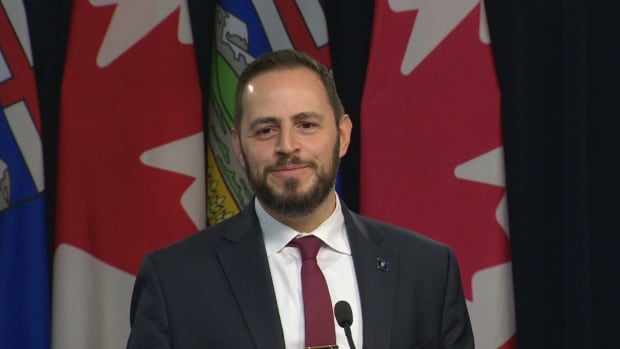
After years of criticism, Alberta Education has committed to change the way it funds K-12 public and Catholic schools in the province to account for school boards that continue to grow.
Education Minister Demetrios Nicolaides confirmed to CBC News that the ministry is hoping to nail down a new funding formula in time for the 2025 budget.
“We’re having those conversations right now and I’m confident we’ll be able to find a model that better suits everybody’s needs,” said Nicolaides.
Since September 2020, funding has been allocated to schools based on the weighted moving average (WMA) — a scheme designed to offer a predictable amount of money for school boards to work with amid changing levels of enrolment or other funding needs year-to-year.
Under WMA, 20 per cent of school funding is based on enrolment numbers for the past year, and a further 30 per cent is awarded based on the current years’ enrolment.
The remaining 50 per cent is based on projected enrolment for the next school year.
Critics of the funding model, including Jason Schilling, president of the Alberta Teachers Association (ATA), say that because funding is determined by a cumulative three-year period, new students entering schools are effectively left underfunded until their third year of enrolment.
“We need to fund kids [from] the moment they walk into the school to the moment they graduate from high school, and that’s the way that we need to look at how this works,” said Schilling.
“A revision of this formula is definitely needed for sure…. Everybody from the top of the province to the bottom of the province are saying that this needs to be examined. So I’m not surprised to see that it’s happening now.”

Nicolaides said the growth in enrolment numbers across the province is one factor that has spurred the ministry to look into revising the model. Another is that the ministry wanted to give WMA enough operational time to be sure that it wasn’t working.
The pandemic caused enrolment numbers to decline significantly across the province the year WMA was instituted, said Nicolaides, which was then followed by a period of rapid growth.
“So we’ve been able to see the model operate in a number of different scenarios,” he said.
“And there’s been that recognition that for school divisions who are seeing some significant growth and maybe need some faster access to financial resources, that we might need to look at a different approach.”
Nicolaides added that while WMA can give a degree of sustainability to smaller rural schools that are experiencing declining enrolment, for schools experiencing rapid growth, particularly in urban areas, he recognizes that the formula has shortcomings.
Schilling said the impacts of WMA on rural school divisions are perhaps not as clear-cut.
“WMA was supposed to help sort of soften the blow for rural boards who were losing students, but funding comes in different envelopes, and the boards can’t move the money around like they were able to in the past,” said Schilling.
He said that if schools who have been experiencing declining enrolment suddenly get an influx of students, the system remains underfunded.
“Suddenly they don’t have the staff or the programs to support those kids.”
Patricia Bolger, board chair of the Calgary Board of Education (CBE), said that WMA has not kept up with the pace of enrolment the school division has experienced in recent years, resulting in a deficit of funding reaching into the millions.
Whatever new funding model Alberta Education comes up with, Bolger said it needs to translate to an increase in the overall budget for schools.
“We need more dollars to our public school boards to go into the classrooms,” she said.
“We are really dealing with the effects of inflation and student enrolment and then complexity within our schools, which requires, of course, additional supports.”
Some of those complexities include assisting the roughly 40 per cent of the CBE’s student population that are English as an Additional Language Learners (EAL), said Bolger.
The province’s reexamination of WMA comes in the wake of Premier Danielle Smith’s announcement to invest $8.6 billion in the construction of new schools over the next three years.